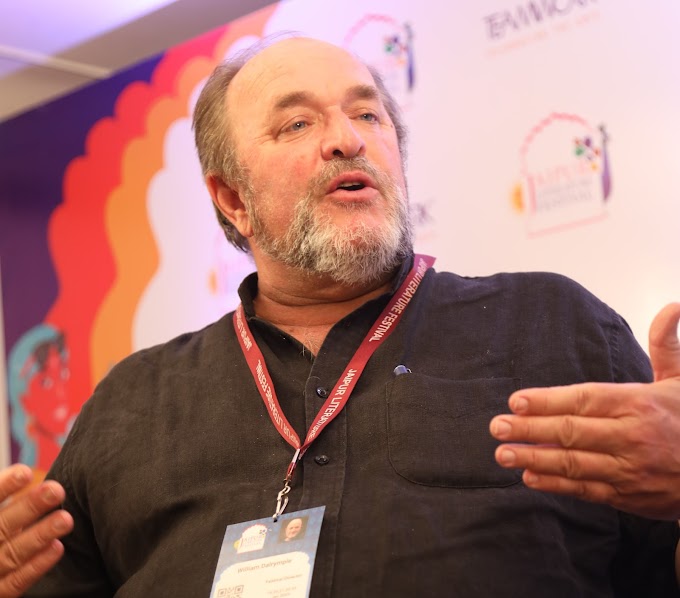The generation gap refers to the differences in beliefs, values, and behaviors between people of different age groups. These differences can create tension and misunderstandings between different generations, and is being particularly pronounced in contemporary India where the greys rule the roost.
One of the main causes of the generation gap is the
rapid pace of social and technological change. Each generation grows up with a
different set of experiences and is shaped by the cultural and historical
events of their time. For example, baby boomers (those born between 1946 and
1964) came of age during the civil rights movement and the Cold War, while
millennials (those born between 1981 and 1996) grew up with the internet and
social media. These different experiences lead to different perspectives on
issues such as politics, race, and technology.
Another cause of the generation gap is the different
values and expectations that different generations have. Baby boomers, for example,
tend to value hard work and financial stability, while millennials place a
greater emphasis on work-life balance and personal fulfillment. This can lead
to conflicts over issues such as career choices and work hours.
Despite these differences, it is important to remember
that there is also a lot that different generations have in common. We all want
the same basic things: to be happy, to be loved, and to make a difference in
the world. By understanding and respecting the different perspectives and
experiences of different generations, we can build bridges across the
generation gap and work together to create a better future for all.
To bridge the generation gap, it is important to open
lines of communication and actively seek out understanding. This can involve
listening to the perspectives of different generations, sharing your own
experiences, and working to find common ground. It is also important to
recognize that everyone has something to contribute, regardless of their age.
Younger generations can learn from the wisdom and experience of older
generations, while older generations can learn from the creativity and energy
of younger generations.
In recent years,
there has been a growing divide between different generations in Indian
society. This generation gap is becoming increasingly evident in various
aspects of life, from attitudes towards work and family to political and social
beliefs.
One of the most obvious ways in which this generation
gap is manifesting is in attitudes towards work. Younger generations in India
are increasingly focused on career advancement and financial success, while
older generations tend to place more emphasis on traditional values such as
family and community. This has led to a growing divide between the two groups,
with younger people feeling frustrated by the lack of opportunities and older
people feeling left behind by the changing times.
Another area in which the generation gap is becoming
increasingly evident is in attitudes towards family and relationships. Younger
generations in India are increasingly focused on individualism and personal
freedom, while older generations tend to place more emphasis on traditional
family values such as loyalty and obedience. This has led to a growing divide
between the two groups, with younger people feeling constrained by traditional
expectations and older people feeling frustrated by the lack of respect for
their values.
The generation gap is also becoming increasingly
evident in political and social beliefs. Younger generations in India tend to
be more progressive and liberal in their views, while older generations tend to
be more conservative and traditional. This has led to a growing divide between
the two groups, with younger people feeling frustrated by the lack of progress
and older people feeling left behind by the changing times.
The generation gap in India is also becoming
increasingly evident in attitudes towards technology and the internet. Younger
generations are more comfortable with technology and the internet, while older
generations tend to be more cautious and skeptical. This has led to a growing
divide between the two groups, with younger people feeling frustrated by the
lack of technological infrastructure and older people feeling left behind by
the changing times.
The generation gap in India is also becoming
increasingly evident in attitudes towards education. Younger generations are
more focused on vocational and technical education, while older generations
tend to be more focused on traditional education. This has led to a growing
divide between the two groups, with younger people feeling frustrated by the
lack of opportunities and older people feeling left behind by the changing
times.
The generation gap in India is also becoming
increasingly evident in attitudes towards gender roles and equality. Younger
generations are more focused on gender equality and women's rights, while older
generations tend to be more traditional and patriarchal. This has led to a
growing divide between the two groups, with younger people feeling frustrated
by the lack of opportunities and older people feeling left behind by the
changing times.
The generation gap in India is also becoming
increasingly evident in attitudes towards sexuality. Younger generations are
more open-minded and accepting of different sexual orientations and identities,
while older generations tend to be more conservative and traditional. This has
led to a growing divide between the two groups, with younger people feeling
frustrated by the lack of opportunities and older people feeling left behind by
the changing times.
The generation gap in India is also becoming
increasingly evident in attitudes towards environmentalism. Younger generations
are more focused on environmental conservation and sustainability, while older
generations tend to be more focused on economic growth and development. This
has led to a growing divide between the two groups, with younger people feeling
frustrated by the lack of opportunities and older people feeling left behind by
the changing times.
The generation gap in Indian politics is a phenomenon
that has been evident for quite some time now. The gap refers to the difference
in attitudes, beliefs, and values between the older and younger generations in
politics. This gap can be seen in the way politicians from different
generations approach various issues and, in the way, they communicate with
voters.
The older generation of politicians in India has been
in power for decades, and they have been shaped by their experiences and the
political climate of their time. They are more likely to be conservative and
cautious in their approach to politics. They tend to focus on maintaining the
status quo and preserving traditional values. They are also more likely to be
skeptical of new ideas and change.
On the other hand, the younger generation of
politicians in India is more progressive and forward-thinking. They are more
likely to embrace new ideas and be open to change. They are also more likely to
be more vocal and outspoken in their views. They tend to be more in tune with
the younger generation's needs and concerns and are more likely to be
responsive to their demands.
The generation gap in Indian politics can be seen in
the way politicians from different generations approach various issues. For
example, older politicians tend to be more conservative on social issues such
as gay rights and women's rights. They are more likely to be opposed to
progressive policies such as affirmative action and quotas for women and
minorities. Younger politicians, on the other hand, tend to be more supportive
of such policies and are more likely to be vocal in their support.
The generation gap in Indian politics can also be seen
in the way politicians from different generations communicate with voters.
Older politicians tend to rely on traditional methods of communication such as
rallies and speeches. They are less likely to use social media and other
digital platforms to connect with voters. Younger politicians, on the other
hand, are more likely to be tech-savvy and to use social media and other
digital platforms to connect with voters. They are more likely to be active on social
media and to use digital platforms to reach out to a wider audience.
The generation gap in Indian politics can have both
positive and negative impacts. On the positive side, the younger generation of
politicians can bring fresh perspectives and new ideas to the political arena.
They can also be more responsive to the needs and concerns of the younger
generation and be more in tune with the changing political landscape. On the
negative side, the gap can lead to a lack of understanding and cooperation between
the older and younger generations of politicians, which can lead to gridlock
and stagnation in the political process.
To bridge the generation gap in Indian politics, it is essential to encourage more young people to get involved in politics. This can be done by creating opportunities for young people to participate in the political process and by providing them with the necessary skills and resources to do so.
It is also important to create a more inclusive and open political culture that encourages dialogue and cooperation between the older and younger generations of politicians.




